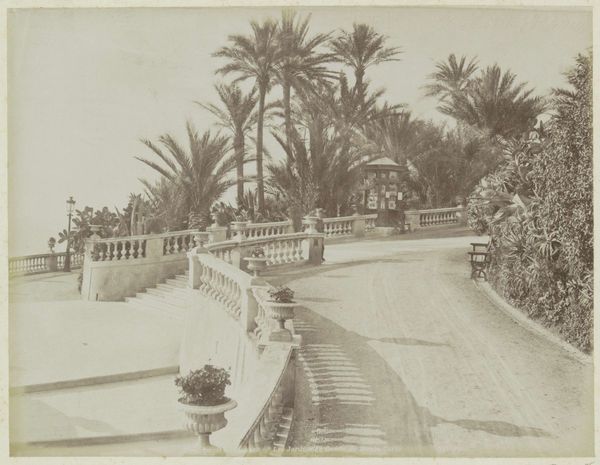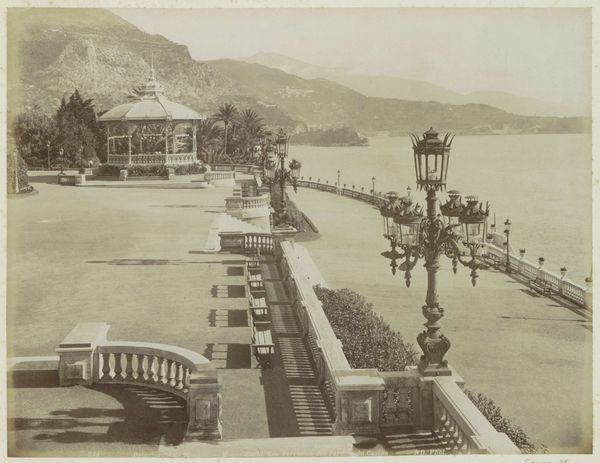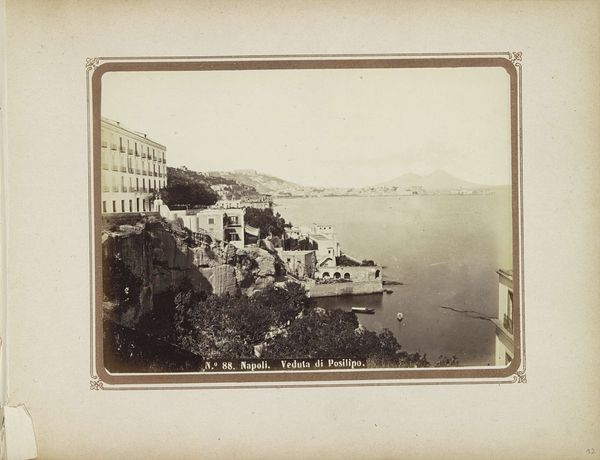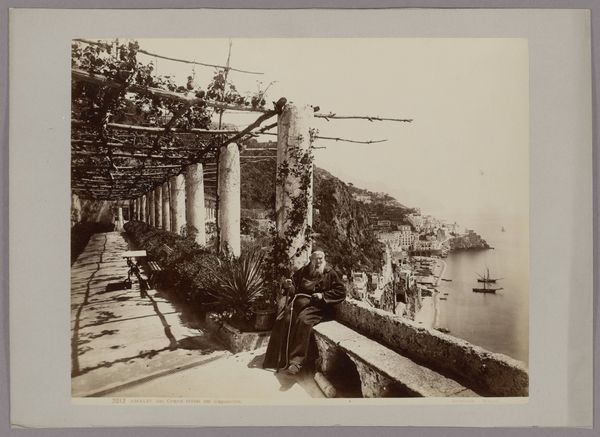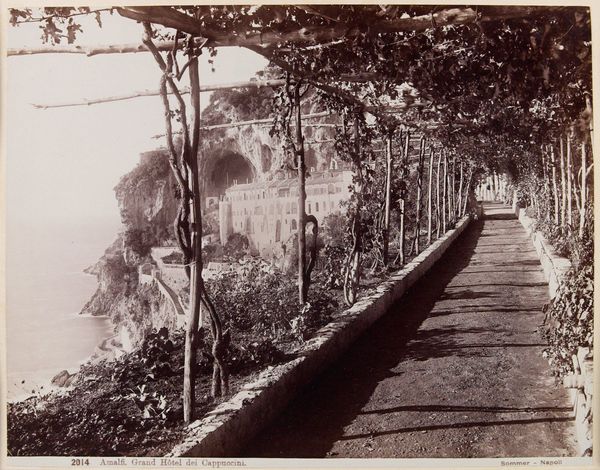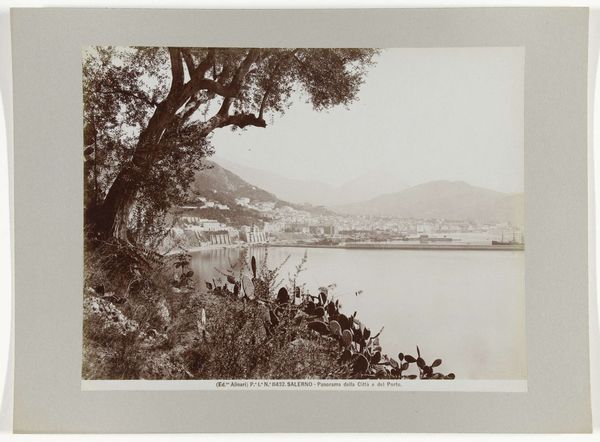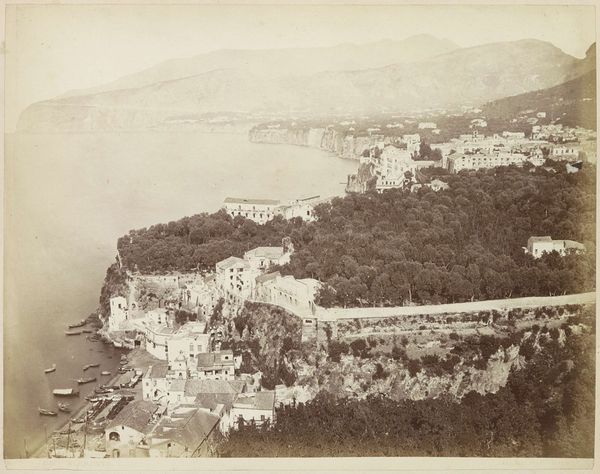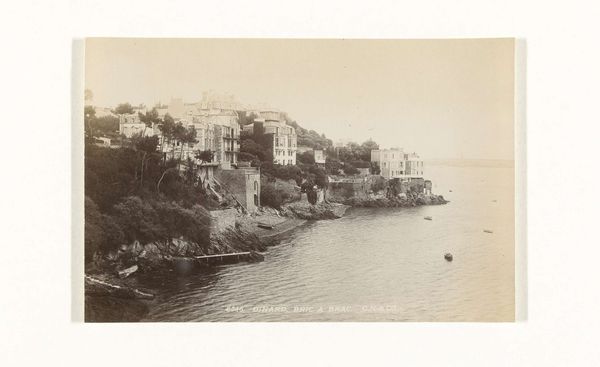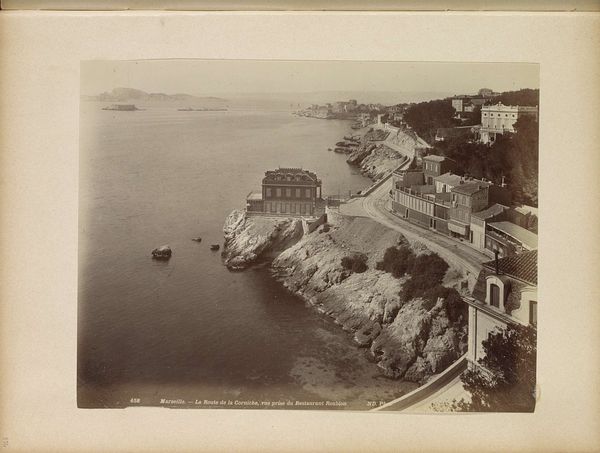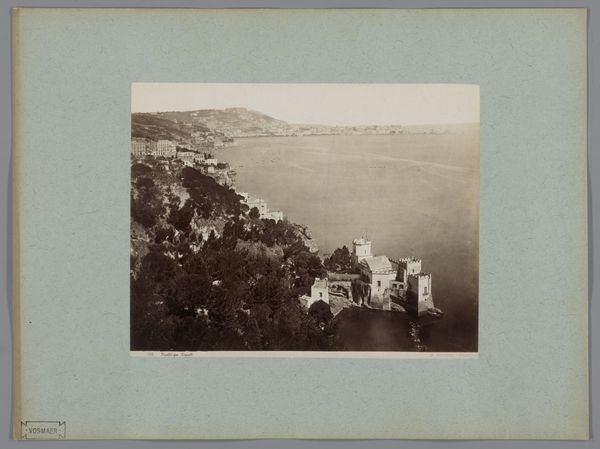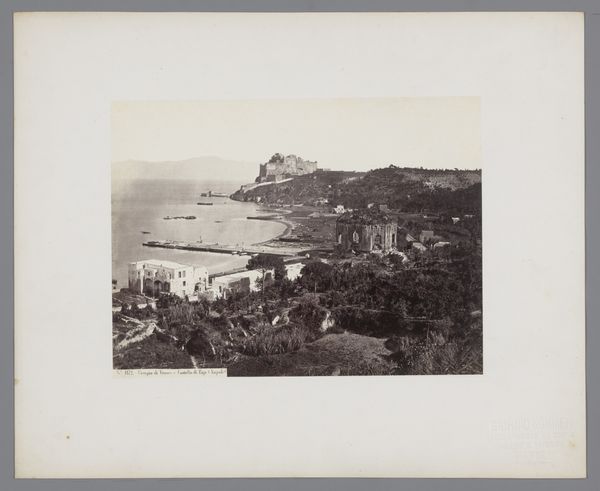
Dimensions: height 207 mm, width 268 mm
Copyright: Rijks Museum: Open Domain
Curator: Here we have a gelatin-silver print dating from circa 1860 to 1890, known as "Gezicht op terrassen van Monaco," which translates to "View of the Terraces of Monaco." The photographer is GJ. Editor: It’s lovely, really. A hazy, sun-drenched scene. It evokes a sort of tranquil escape with the receding staircase and view of the coastline in the background. Curator: Yes, this photograph exemplifies the style known as pictorialism, particularly its capacity to represent landscape and cityscape subjects. Consider how it might speak to the expansion of photographic tourism. The ability to bring back a captured vision of these picturesque locales would have certainly driven photography's popularization. Editor: Exactly. And let’s not overlook how such images shape perception. Tourism itself, you see, isn't neutral; this image romanticizes Monaco. Whose Monaco is it depicting? Surely not one accessible to all. The soft focus seems to deliberately blur out the gritty realities and potential socio-economic disparities that might be present in Monaco at this time. Curator: An important point. Beyond that romantic aesthetic, I am interested in the ways photographic techniques mirror established artistic practices of the time. The use of soft focus, similar to what one sees in painting. In this respect, early photographers seek to elevate their new medium. Editor: Perhaps, but I think it’s critical that we contextualize this image within the power structures it reproduces. A seemingly benign view normalizes a specific, probably elite, perspective. These constructed views invite the gaze, directing who belongs and who does not. Even this beautiful, meticulously arranged shot reveals layers of political suggestion. Curator: A fitting observation that brings a sharp analytical focus on an outwardly beautiful artwork! It really allows us to examine both how photographic tourism began and the potential pitfalls in how a destination can be presented through images. Editor: Indeed. Seeing through those layers challenges us to engage more critically with both the art and the worlds they reveal, hopefully spurring discussions around representation and accessibility.
Comments
No comments
Be the first to comment and join the conversation on the ultimate creative platform.

